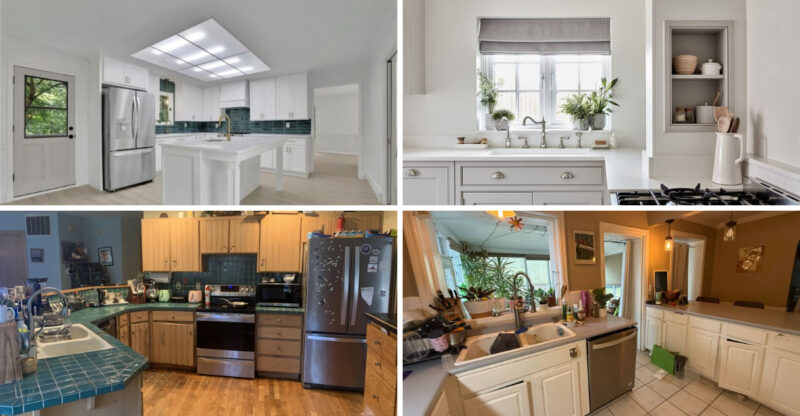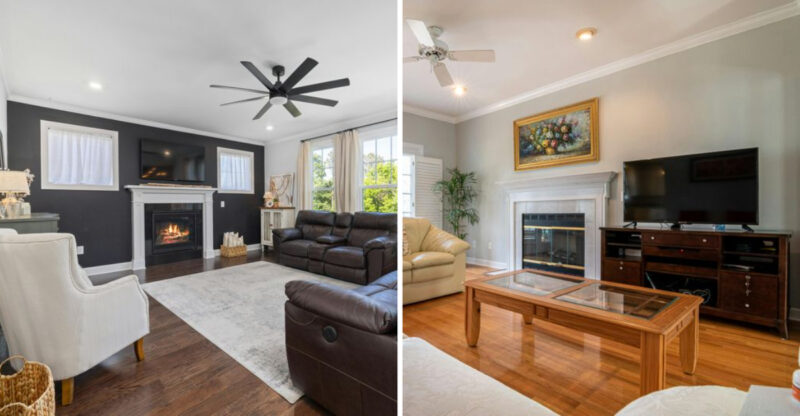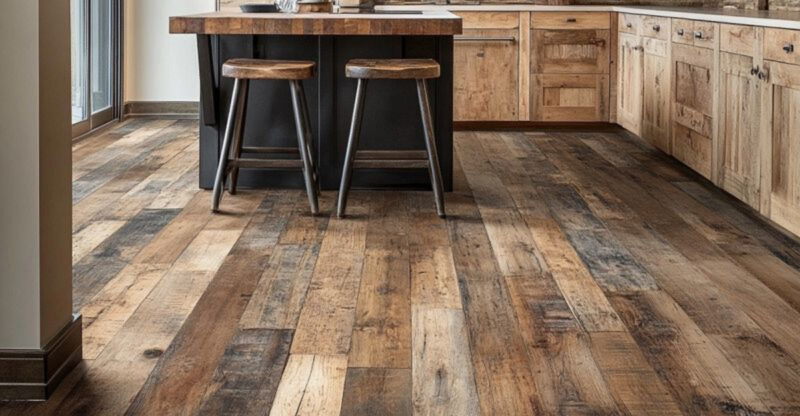New Mexico Designers Say These 12 Kitchen Looks Are Dated Stick With 10 These Instead
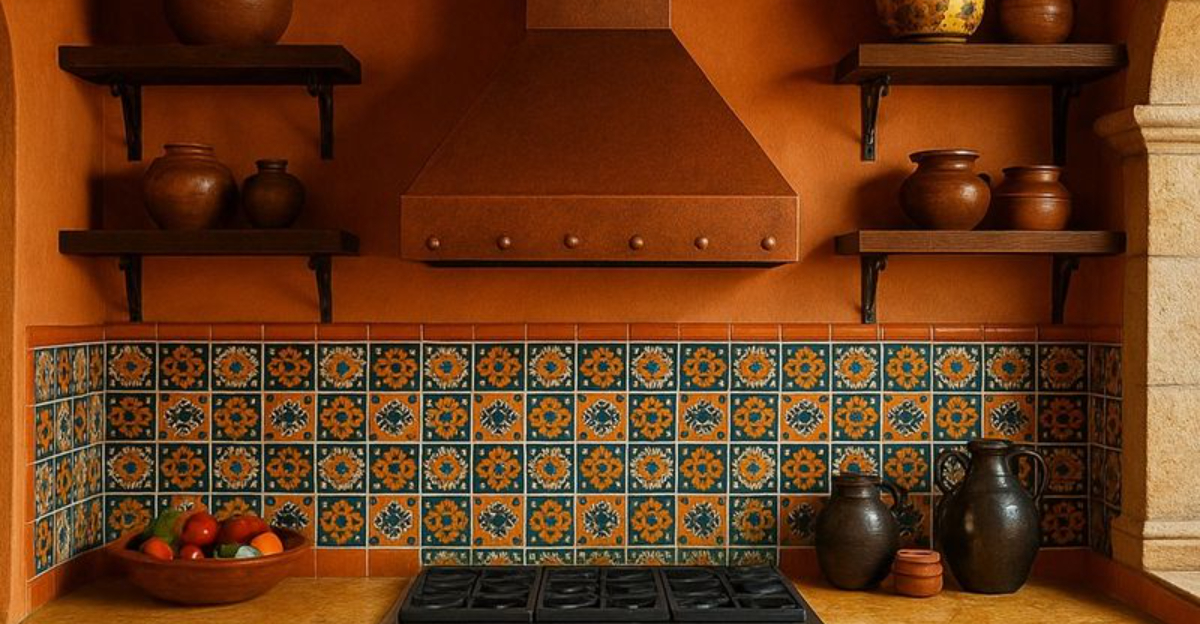
Kitchen styles evolve faster than most homeowners realize, especially in New Mexico where regional influences create unique design challenges.
Local designers are noticing outdated elements that make kitchens look stuck in the past decade.
I’ve gathered their expert insights on which kitchen features to avoid and what to choose instead for a fresh, timeless space that honors New Mexico’s distinctive aesthetic.
1. Dark Wood Cabinets (dated)
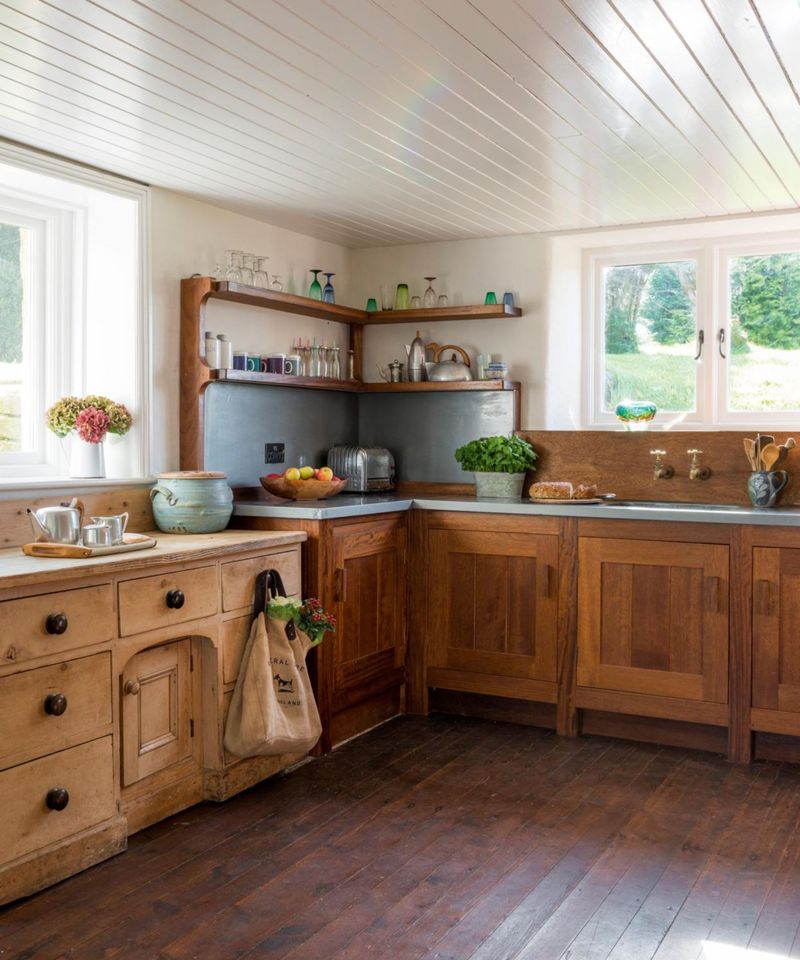
Those espresso-toned cabinets that dominated kitchens in the early 2000s now make spaces feel smaller and more oppressive. New Mexico’s abundant natural light gets swallowed up by these dark surfaces, creating a cave-like atmosphere rather than the airy feeling homeowners crave.
Many local designers point out that these cabinets make desert homes feel unnecessarily heavy and formal. The darkness also highlights dust and fingerprints more prominently a practical consideration in our dry, dusty climate.
Santa Fe designer Maria Gonzalez explains, “Dark cabinets worked when tuscan kitchens were trending, but they don’t reflect our region’s relationship with light and space anymore.”
2. Busy Mosaic Backsplashes (dated)

Remember those intricate, multi-colored mosaic backsplashes? While they once represented the height of kitchen fashion, New Mexico designers now view them as visual clutter that dates your space instantly. The tiny tiles with contrasting grout lines create a busy backdrop that competes with other kitchen elements.
Albuquerque designer James Martinez notes that these complicated patterns quickly become overwhelming. “They’re like wearing too many accessories at once,” he says. The maintenance headaches are real too – those numerous grout lines trap cooking oils and are notoriously difficult to clean.
If you still have one of these backsplashes, it’s probably the first thing visitors notice – and not in a good way.
3. Heavy Granite Counters (dated)
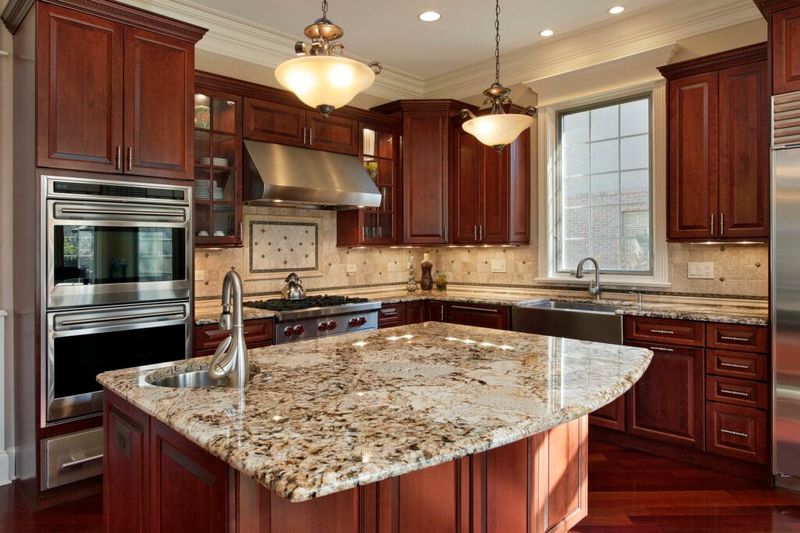
Speckled brown and beige granite countertops once represented luxury but now scream early 2000s. Those busy patterns with gold and rust flecks that seemed to match everything actually match nothing, according to Taos designer Rafael Montoya.
The visual weight of these countertops overwhelms modern kitchens. Their dark, mottled appearance often clashes with the cleaner aesthetic today’s homeowners prefer. The dated color combinations especially the ubiquitous “Santa Cecilia” or “Venetian Gold” varieties immediately time-stamp your kitchen renovation.
When paired with other dated elements like oak cabinets, these countertops create a cumulative effect that says “renovation needed.” Most concerning to designers: these heavy countertops can make smaller New Mexico kitchens feel cramped.
4. Overly Rustic Themes (dated)
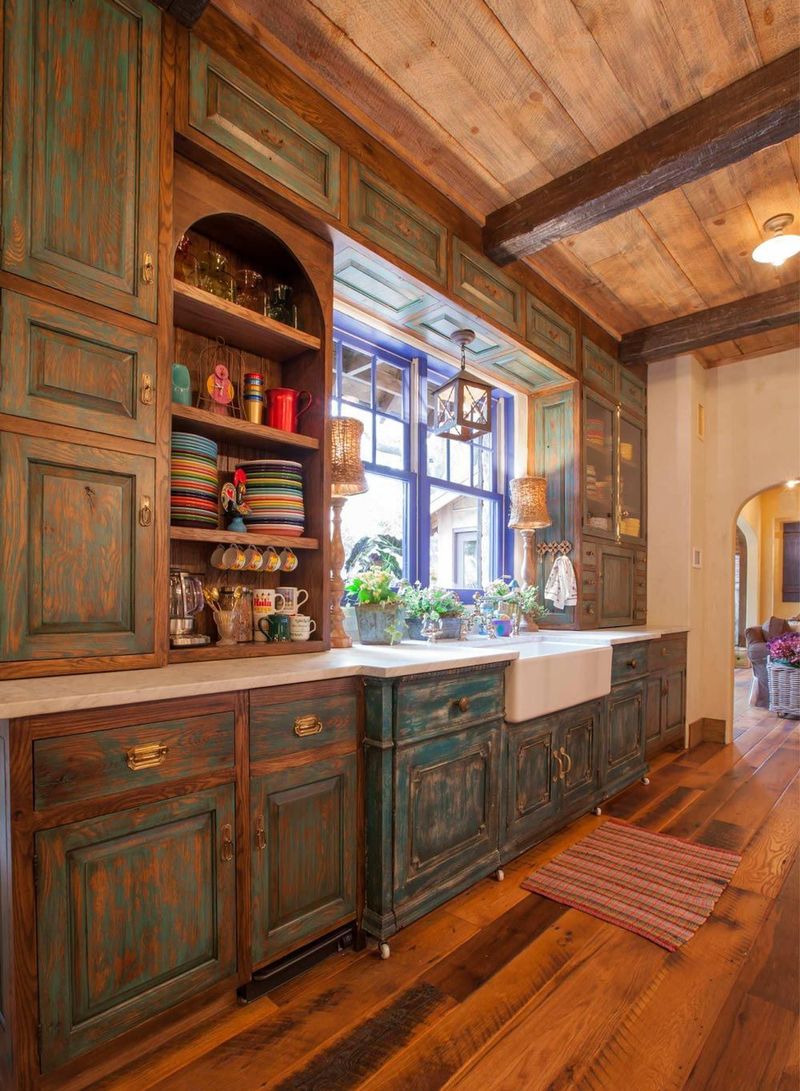
Excessive rustic elements – think distressed everything, barn doors, and chicken wire cabinet inserts – have reached their expiration date. This heavy-handed approach to “farmhouse chic” feels inauthentic in New Mexico homes and creates a theme-park version of rustic living.
Las Cruces designer Elena Sanchez points out that genuine New Mexico homes have always balanced rustic elements with sophistication. “Going overboard with the rustic look creates a caricature rather than authentic character,” she explains.
Fake distressing particularly bothers designers – those deliberately scuffed cabinet finishes and artificially aged hardware look contrived rather than charming. The rustic-overload approach also makes kitchens feel smaller and more cluttered than they actually are.
5. Pot Racks Everywhere (dated)
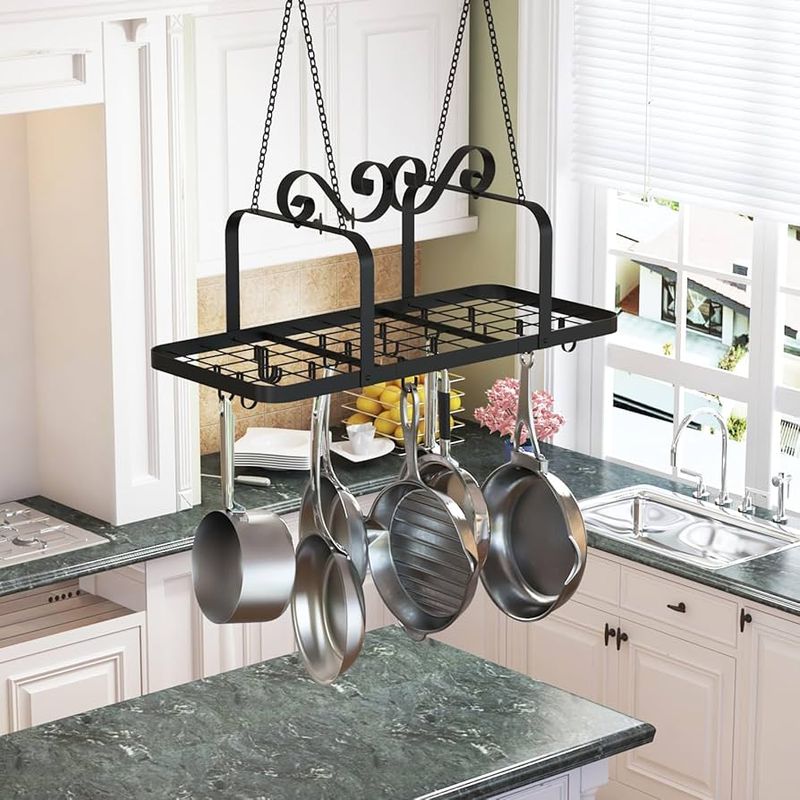
Hanging pot racks once symbolized serious home cooking, but they’ve lost their appeal in modern New Mexico kitchens. Those ceiling-mounted metal grids displaying every pot and pan you own now make spaces look cluttered and collect dust in our dry climate.
Santa Fe designer Carlos Mendez notes that these bulky fixtures interrupt sightlines and make ceilings feel lower. “They create visual chaos overhead,” he explains. The practical issues are significant too – pots collect dust and cooking residue when displayed this way, requiring frequent cleaning.
Most problematic is how pot racks date themselves through their typically ornate, wrought-iron styling that clashes with today’s cleaner kitchen aesthetics. Unless you’re running a professional kitchen, those pots are better stored in drawers and cabinets.
6. Dark Terra Cotta Tiles (dated)
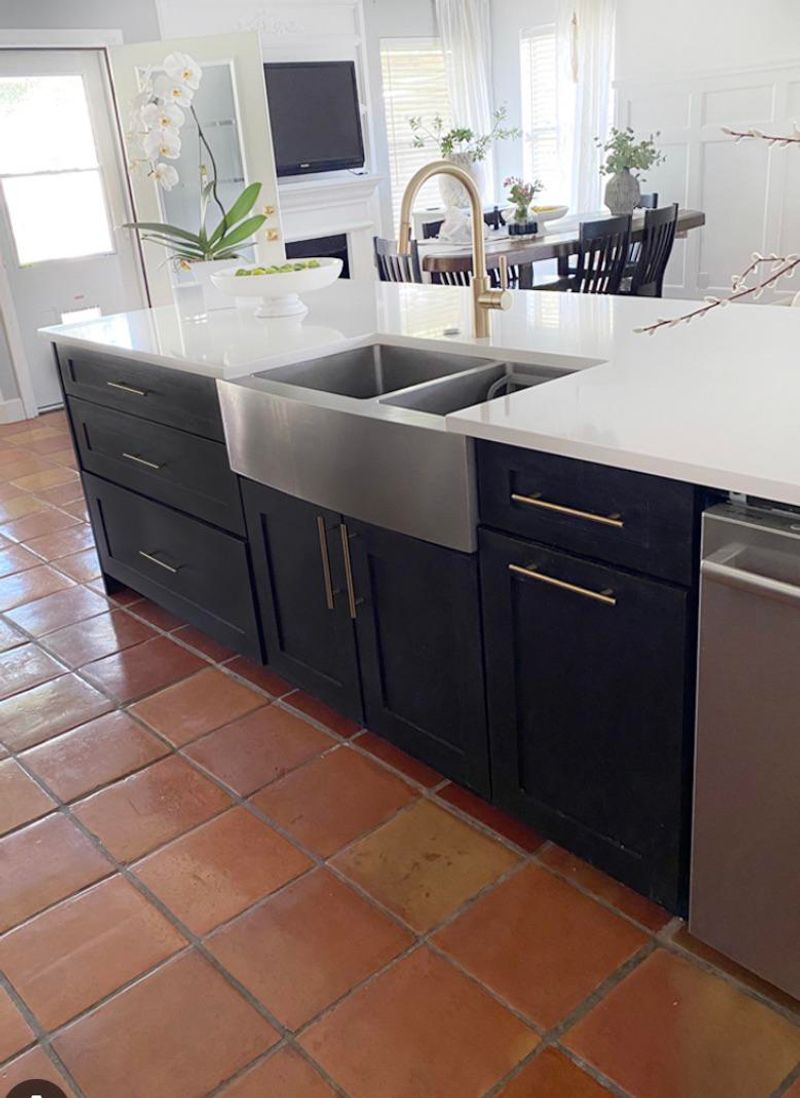
Those deep orange-brown terra cotta floor tiles that once defined Southwest kitchens now make spaces feel stuck in the 1990s. Their dark, reddish-brown tones absorb light rather than reflect it, making kitchens feel smaller and darker than necessary in our sun-drenched region.
Albuquerque designer Sophia Herrera points out that these tiles often feature the dated 12×12 size that creates a grid-like effect at odds with today’s more flowing spaces. The high-contrast grout lines typically used with these tiles further date the look.
Maintenance issues compound the problem – these porous tiles stain easily and their uneven surface collects dirt. While terra cotta once seemed the obvious choice for New Mexico homes, designers now see them as unnecessarily heavy and limiting.
7. Ornate Corbels and Moldings (dated)
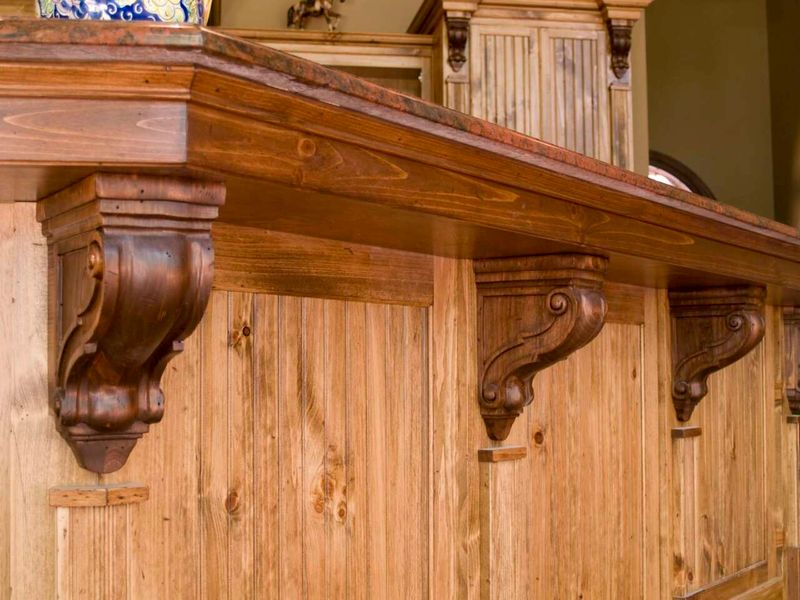
Excessive decorative corbels, scrollwork, and crown moldings that once signaled luxury now read as fussy and dated. These ornate architectural details – especially those massive carved corbels under breakfast bars – overwhelm modern kitchen designs with unnecessary visual weight.
Roswell designer Miguel Santos observes that these elaborate details collect dust and grease in kitchen environments. “They’re like Victorian furniture in a space that needs to be functional and clean,” he explains. The maintenance headaches alone make them impractical.
Most telling is how these elements clash with New Mexico’s authentic architectural heritage, which favors clean lines and organic forms rather than fussy ornamentation. When every surface has decorative flourishes, the eye has nowhere to rest, creating a visually exhausting kitchen.
8. Glossy Cherry Finishes (dated)
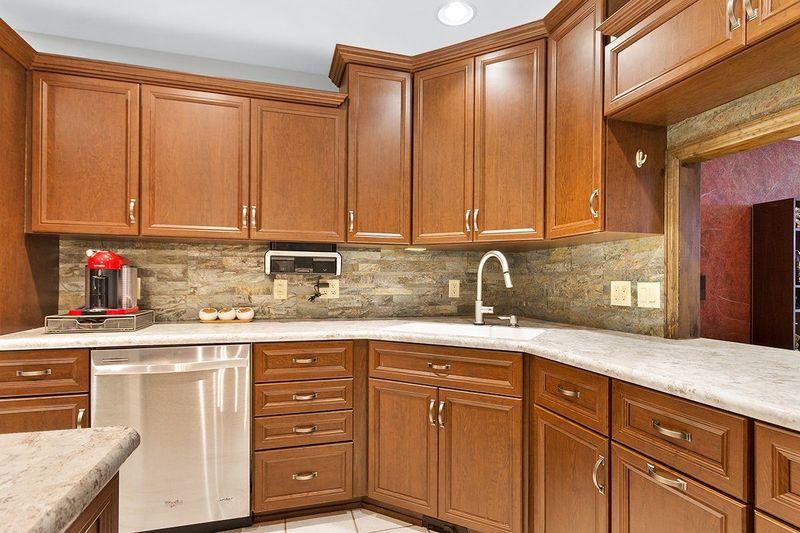
Those shiny, reddish-brown cherry cabinets that dominated upscale kitchens in the early 2000s now instantly date your space. Their distinctive red undertones clash with most contemporary color schemes and their high-gloss finish shows every fingerprint and imperfection.
Taos designer Isabella Martinez notes that these finishes often develop an uneven patina over time, with some areas fading faster than others. “They looked elegant initially but haven’t aged gracefully,” she explains. The formal, traditional feel of these cabinets also conflicts with the more relaxed lifestyle of modern New Mexico homes.
Perhaps most problematic is how these cabinets’ distinctive color limits other design choices, forcing homeowners to work around their dominant reddish hue rather than creating a cohesive palette.
9. Faux Tuscan Décor (dated)
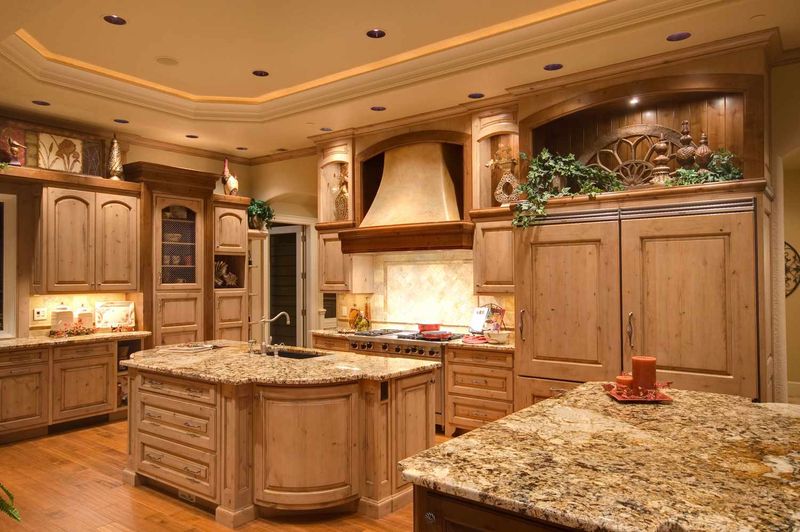
Artificial Tuscan-themed kitchens – with their faux-painted walls, grape and olive motifs, and “old world” accessories – have fallen decidedly out of favor. This once-popular theme now feels like a theme park version of Mediterranean style that never truly belonged in New Mexico homes.
Santa Fe designer Gabriela Lujan points out that these kitchens often feature a mishmash of inauthentic elements. “The fake distressing, the grape-themed everything, the theatrical color palette it creates a costume rather than a kitchen,” she explains. The heavy, ornate accessories that accompany this look also collect dust and clutter countertops.
Most problematic is how this imported aesthetic ignores New Mexico’s rich design heritage in favor of a manufactured “European” identity that feels disconnected from our region.
10. Excessive Decorative Plates (dated)

Collections of decorative plates displayed on kitchen walls or in plate racks have fallen firmly into the dated category. These dust-collecting arrangements whether Talavera-inspired or mass-produced “collectibles” create visual clutter that makes kitchens feel busy and old-fashioned.
Albuquerque designer Lucas Chavez notes that these displays often become the kitchen’s focal point for all the wrong reasons. “They’re visual noise that distracts from the architecture and good design elements,” he says. The practical issues are significant too these plates require regular dusting in our dry climate.
Most telling is how these displays often feature mismatched styles that don’t relate to the kitchen’s overall design. When every wall holds a plate collection, the space feels more like a souvenir shop than a contemporary kitchen.
11. Overly Themed Southwest Colors (dated)
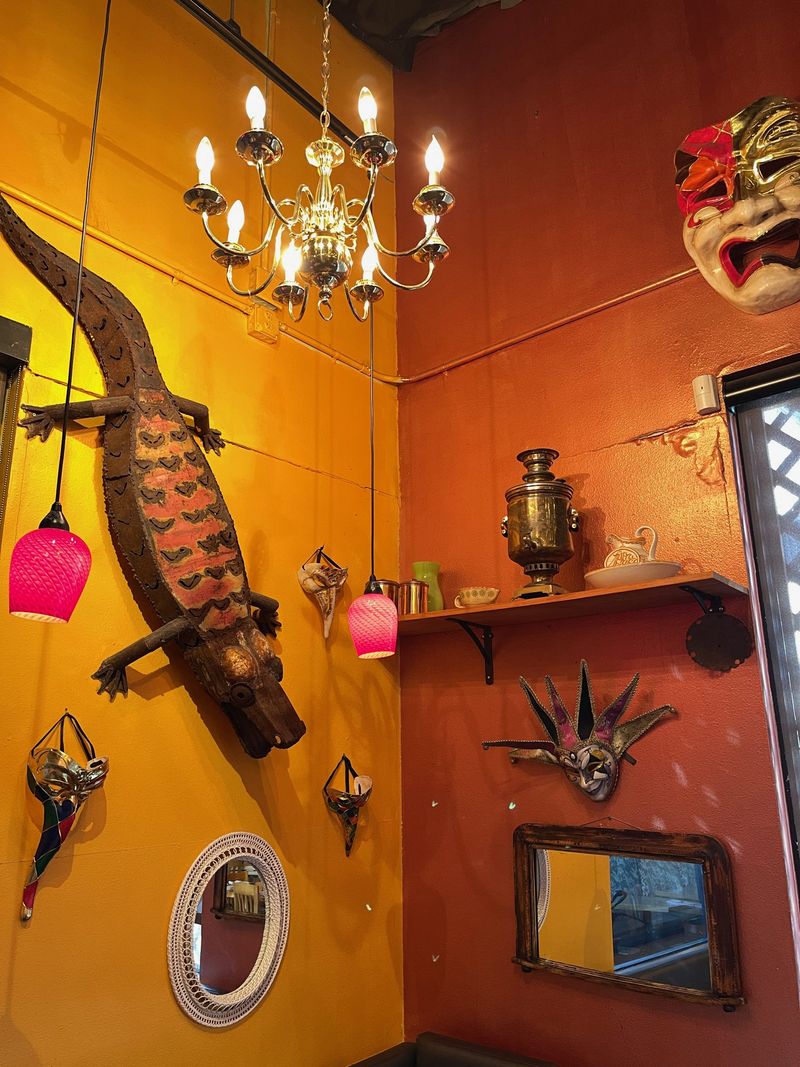
Kitchens drowning in turquoise, terracotta, and bright yellow – the clichéd “Southwest palette” – now feel like caricatures rather than authentic New Mexico spaces. These high-intensity color combinations, especially when used on major surfaces like cabinets or countertops, create a theme-park version of regional style.
Las Cruces designer Antonio Reyes observes that these oversaturated palettes often feel like they’re trying too hard. “Authentic New Mexico homes have always used color with subtlety and restraint,” he explains. The practical problem is these bold colors quickly become tiresome and limit other design choices.
Most problematic is how these kitchens often incorporate every Southwest cliché at once – the coyote tile mural, the kokopelli cabinet pulls, the sun-face accessories – creating spaces that feel more like tourist gift shops than functional homes.
12. Raised-Panel Cabinet Doors (dated)
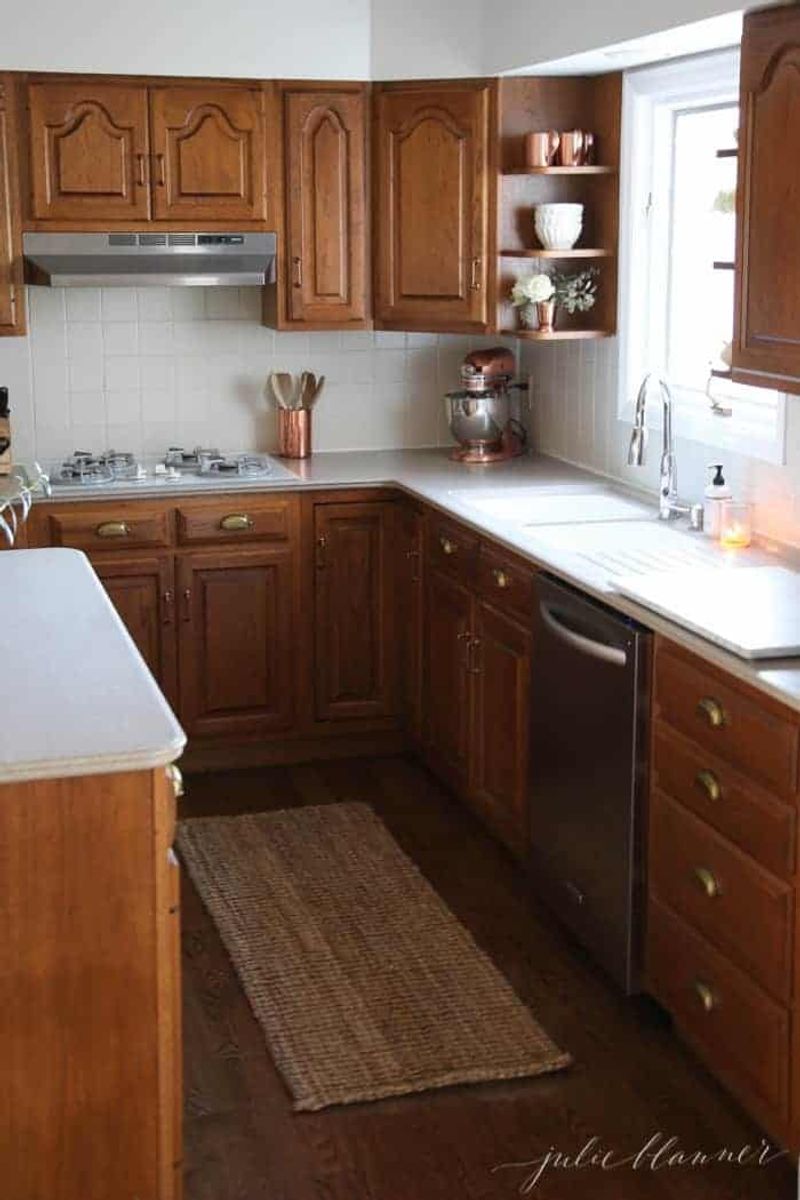
Those ornate raised-panel cabinet doors with elaborate edge profiles now immediately date kitchens to the early 2000s. Their fussy, traditional styling feels out of step with today’s cleaner aesthetic preferences and creates unnecessary visual busyness across kitchen walls.
Roswell designer Ana Gutierrez notes that these cabinet profiles collect dust and grease in their recessed areas. “They’re like kitchen dust magnets,” she explains. The traditional, formal look of these cabinets also clashes with the more relaxed, organic character of authentic New Mexico design.
Perhaps most telling is how these cabinets often feature those dated cathedral arches at the top – a detail that screams “renovation needed.” When combined with other dated elements like ornate hardware, these cabinets create a cumulative effect that ages the entire kitchen.
13. Light Wood Cabinets (instead)
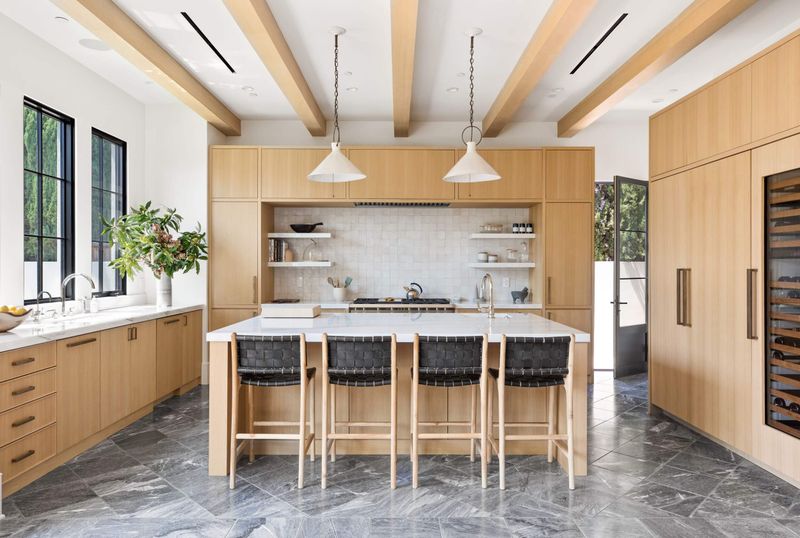
Warm, light-toned wood cabinets have become the perfect antidote to those dated dark options. Their natural hues – from pale oak to honey-colored alder – bring warmth without heaviness and reflect New Mexico’s abundant natural light rather than absorbing it.
Santa Fe designer Elena Ramirez points out that these lighter woods connect beautifully with our landscape. “They echo the sun-bleached woods and adobe tones you see throughout the state,” she explains. The practical benefits are significant to lighter cabinets show less dust in our dry climate.
What makes these cabinets feel current is their simpler styling – clean lines rather than ornate details, and natural finishes that showcase the wood grain instead of hiding it. They create an organic foundation that works with both traditional and contemporary New Mexico interiors.
14. Subtle Backsplashes (instead)
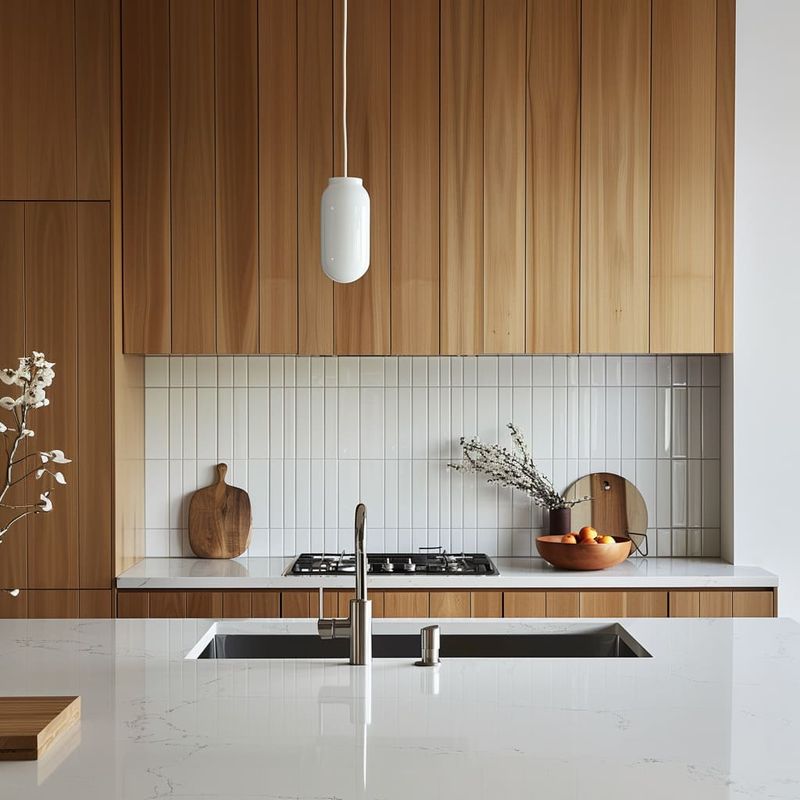
Clean, understated backsplashes have replaced those busy mosaics in today’s finest New Mexico kitchens. Simple subway tiles in earthy tones, handmade ceramics with subtle variations, or even seamless extensions of countertop materials create sophisticated backgrounds that don’t compete for attention.
Albuquerque designer Diego Sanchez notes that these quieter surfaces let other elements shine. “The backsplash shouldn’t be the star – it should support the overall composition,” he says. Many homeowners appreciate how these simpler surfaces are far easier to clean without countless grout lines.
What makes these backsplashes feel distinctly New Mexican is their tactile quality – slightly irregular handmade tiles or textured surfaces that reference adobe without being literal. They create depth through texture rather than busy patterns, allowing the eye to rest.
15. Quartz Countertops (instead)
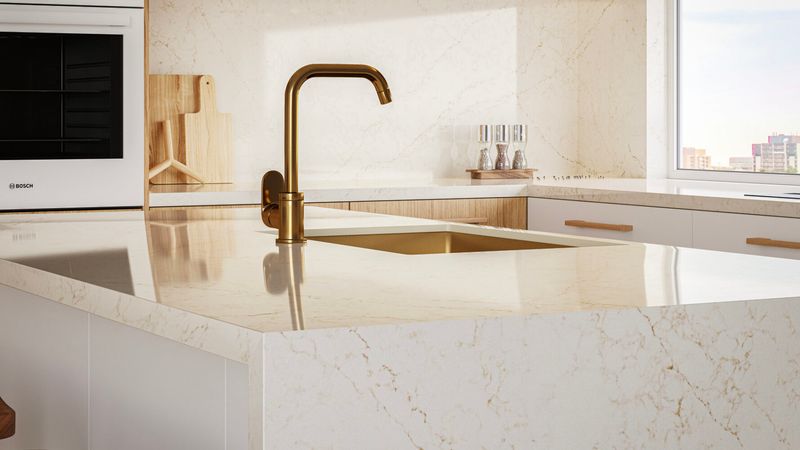
Sleek quartz countertops have decisively replaced busy granite in stylish New Mexico kitchens. Their clean, consistent appearance – whether in soft whites, warm beiges, or subtle patterns that mimic natural stone – creates a sophisticated foundation that doesn’t overwhelm the space.
Taos designer Carmen Ortiz appreciates how quartz balances practicality with aesthetics. “My clients love that quartz doesn’t require sealing like granite and resists staining from red chile and coffee,” she explains. The material’s durability makes particular sense in our state’s busy family kitchens.
What makes today’s quartz feel fresh is its restraint subtle veining rather than busy speckles, and colors that complement rather than dominate the palette. Many designers choose warm-toned quartz that references the colors of New Mexico’s landscape without being too literal.
16. Clean Contemporary Lines (instead)
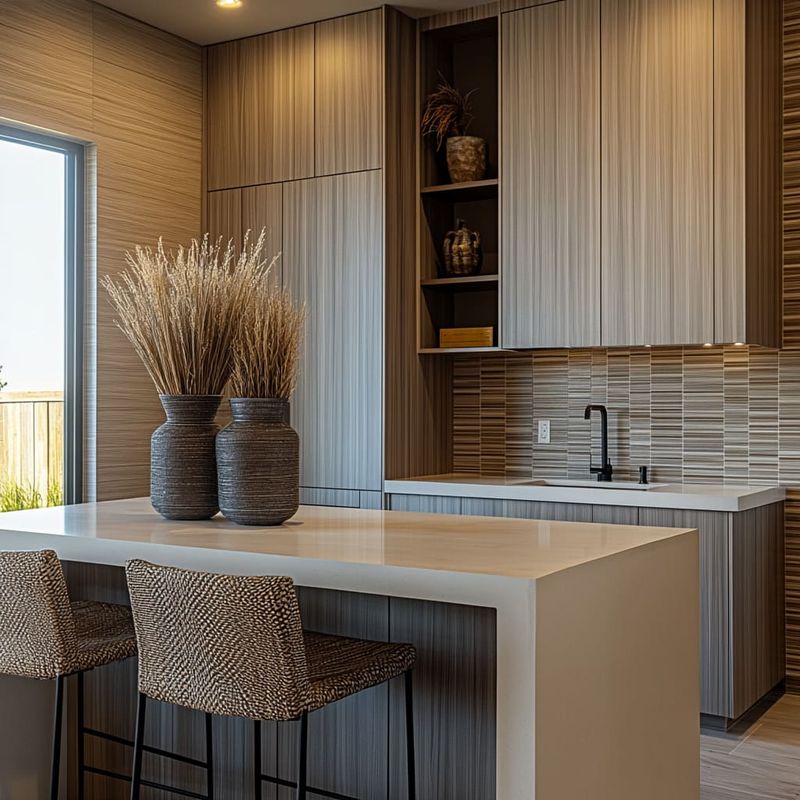
Streamlined, unfussy design has replaced the ornate detailing of dated kitchens, creating spaces that feel both timeless and distinctly New Mexican. Simple cabinet fronts, minimal trim work, and clean architectural lines let the quality materials and craftsmanship speak for themselves.
Las Cruces designer Ricardo Martinez finds that these simpler designs actually highlight New Mexico’s architectural heritage. “Our traditional buildings have always valued honest materials and straightforward construction – these contemporary kitchens honor that tradition,” he explains. The practical benefits include easier cleaning and more efficient use of space.
What makes these clean-lined kitchens feel connected to New Mexico is their material palette – warm woods, natural stone, handcrafted tile – that references regional traditions without resorting to clichés or literal interpretations.
17. Open Shelving Touches (instead)
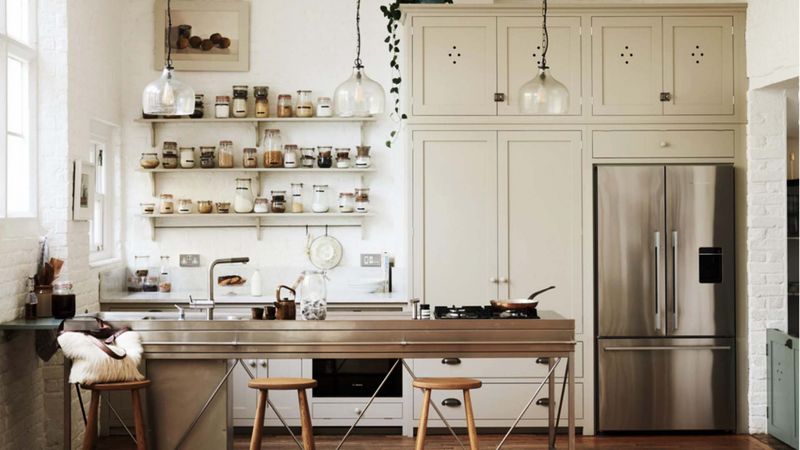
Strategic open shelving has replaced those dated pot racks, offering thoughtfully curated display space without the clutter. Unlike kitchens with all-open storage, today’s best New Mexico designs incorporate just enough open shelving to display beautiful ceramics and essential items while keeping most storage concealed.
Santa Fe designer Lucia Gonzalez recommends limiting open shelves to areas away from the cooking zone. “A few well-placed shelves with carefully selected items create breathing space and personality,” she explains. Many homeowners appreciate how these focused displays allow them to showcase handmade pottery and meaningful objects.
What makes these shelving arrangements feel fresh is their restraint – simple brackets, limited quantities of displayed items, and integration with the overall architecture rather than appearing tacked-on as an afterthought.
18. Neutral Tile Flooring (instead)
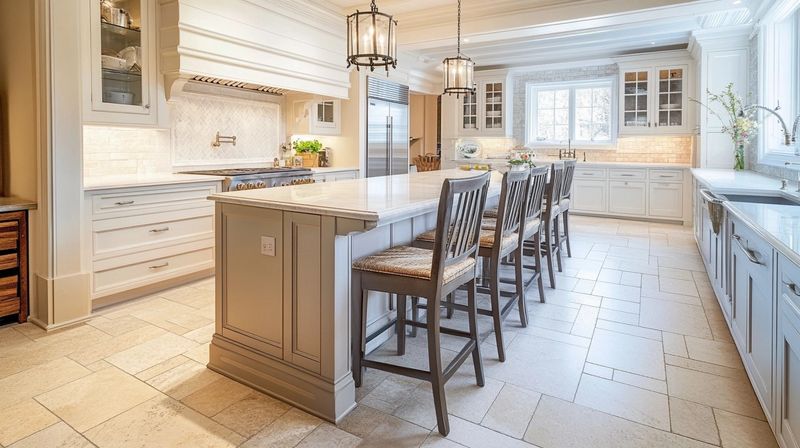
Soft, neutral floor tiles have replaced those dark terra cottas in today’s sophisticated New Mexico kitchens. Large-format porcelain tiles in warm beiges, soft grays, or subtle textures create a seamless foundation that visually expands the space rather than chopping it up with busy grout lines.
Albuquerque designer Javier Torres notes that these lighter floors reflect our abundant natural light. “They brighten the entire kitchen and make it feel more spacious,” he explains. Homeowners appreciate how these durable porcelains offer the look of natural stone without the maintenance headaches.
What makes these floors feel current is their scale – larger 24×24 or even 36×36 formats that minimize grout lines and create a more continuous surface. Many designers choose tiles with subtle variation that references adobe or natural stone without literal imitation.
19. Matte Finishes (instead)
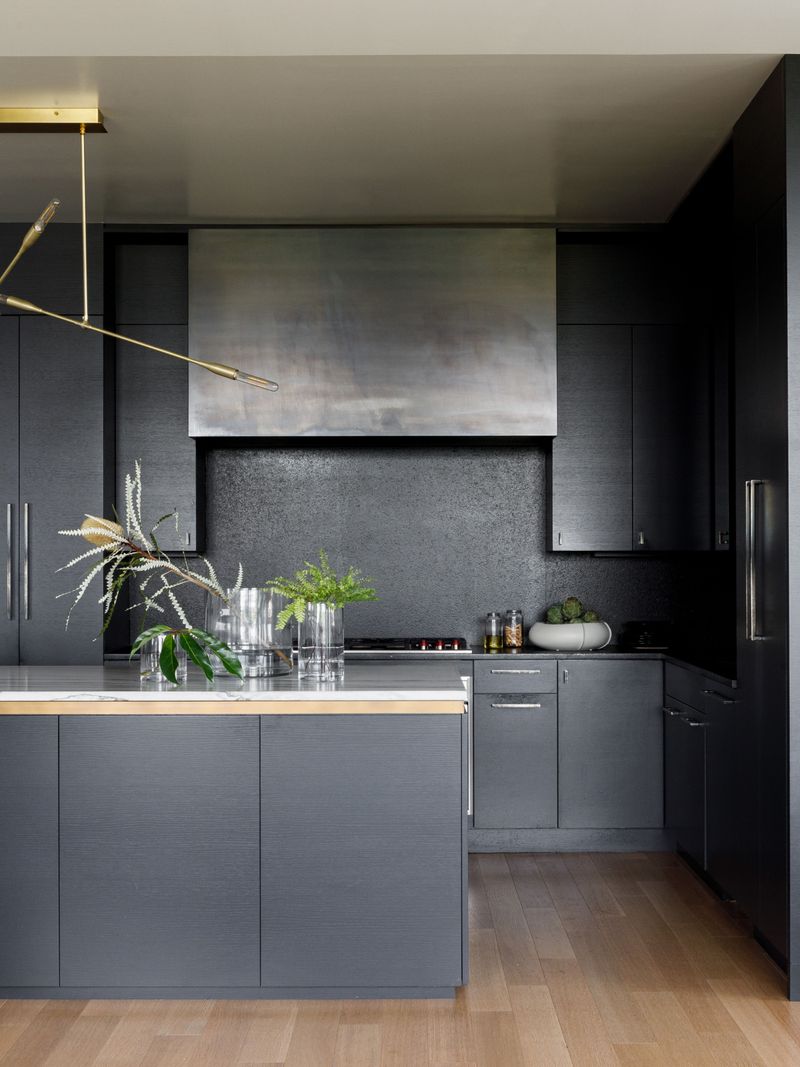
Sophisticated matte finishes have replaced those dated glossy surfaces in today’s finest New Mexico kitchens. From cabinets to countertops to backsplashes, these low-luster surfaces create depth and tactile interest without the harsh reflections and fingerprint issues of high-gloss alternatives.
Roswell designer Mateo Chavez finds that matte finishes connect beautifully with our region’s design heritage. “There’s something about a matte surface that feels authentic to New Mexico – it references the subtle luster of adobe and traditional plaster,” he explains. The practical benefits are significant too – these surfaces hide minor imperfections and don’t show every fingerprint.
What makes these matte finishes feel current is their subtle depth – they’re not flat or chalky but have a gentle luminosity that changes with the light throughout the day.
20. Understated Hardware (instead)
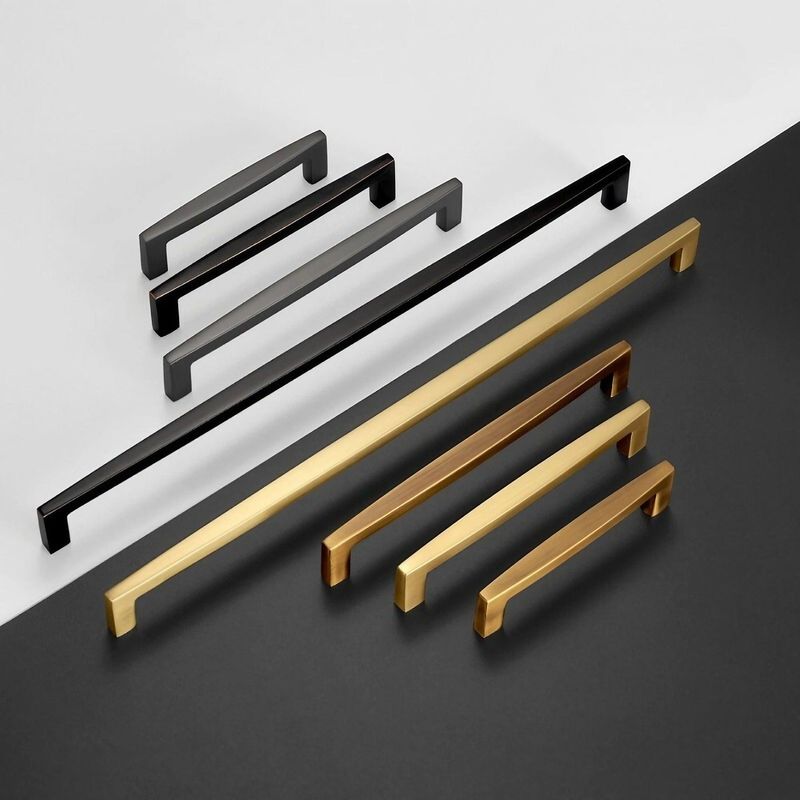
Simple, architectural hardware has replaced ornate pulls and knobs in today’s most stylish New Mexico kitchens. Clean-lined handles in brushed brass, blackened bronze, or matte black create subtle accents rather than competing for attention with busy cabinet fronts.
Santa Fe designer Mariana Lopez views hardware as jewelry for the kitchen. “Just like personal accessories, kitchen hardware should enhance rather than overwhelm,” she explains. Many homeowners appreciate how these simpler options feel better in the hand during daily use.
What makes today’s hardware choices feel fresh is their honest materiality – real metals that develop natural patinas over time rather than faux finishes that chip and peel. The scale has changed too, with longer, more substantial handles that create cleaner lines across cabinet fronts.
21. Soft Southwest Accents (instead)
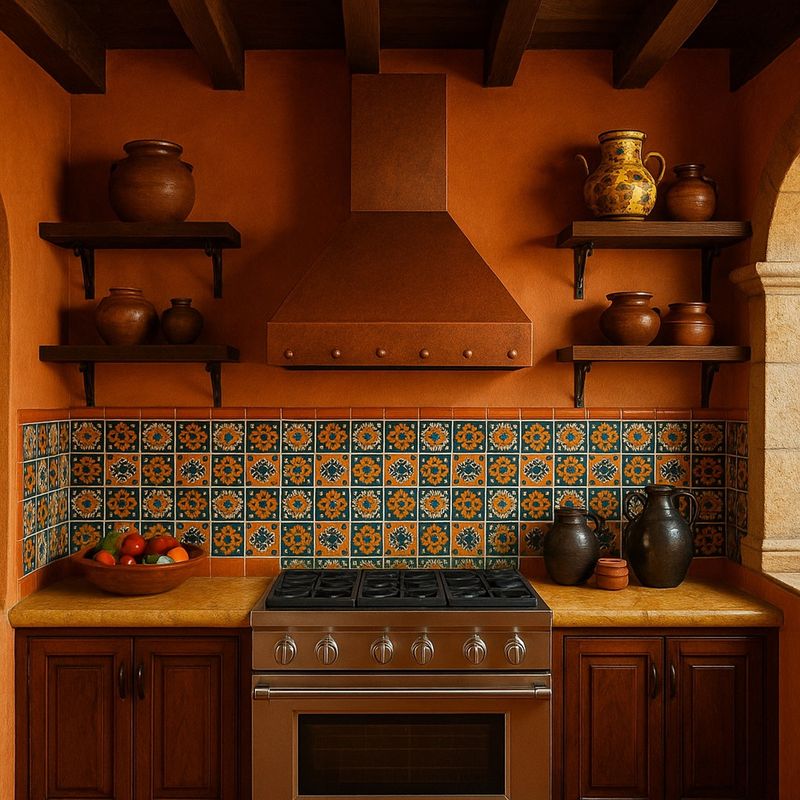
Subtle regional touches have replaced those overwhelming Southwest themes in today’s sophisticated New Mexico kitchens. Rather than plastering every surface with kokopellis and cactus motifs, designers now incorporate thoughtful references – perhaps a single handwoven textile, artisanal pottery displayed on open shelving, or hardware inspired by traditional designs.
Las Cruces designer Isabella Martinez advocates for quality over quantity. “One beautiful handmade object tells a more powerful story than dozens of mass-produced ‘Southwest’ trinkets,” she explains. Many homeowners appreciate how these focused elements create meaning without turning their kitchen into a caricature.
What makes these accents feel authentic is their connection to living traditions – items made by regional artisans rather than factory-produced imitations, creating kitchens that honor New Mexico’s heritage without becoming theme parks.
22. Streamlined Appliances (instead)
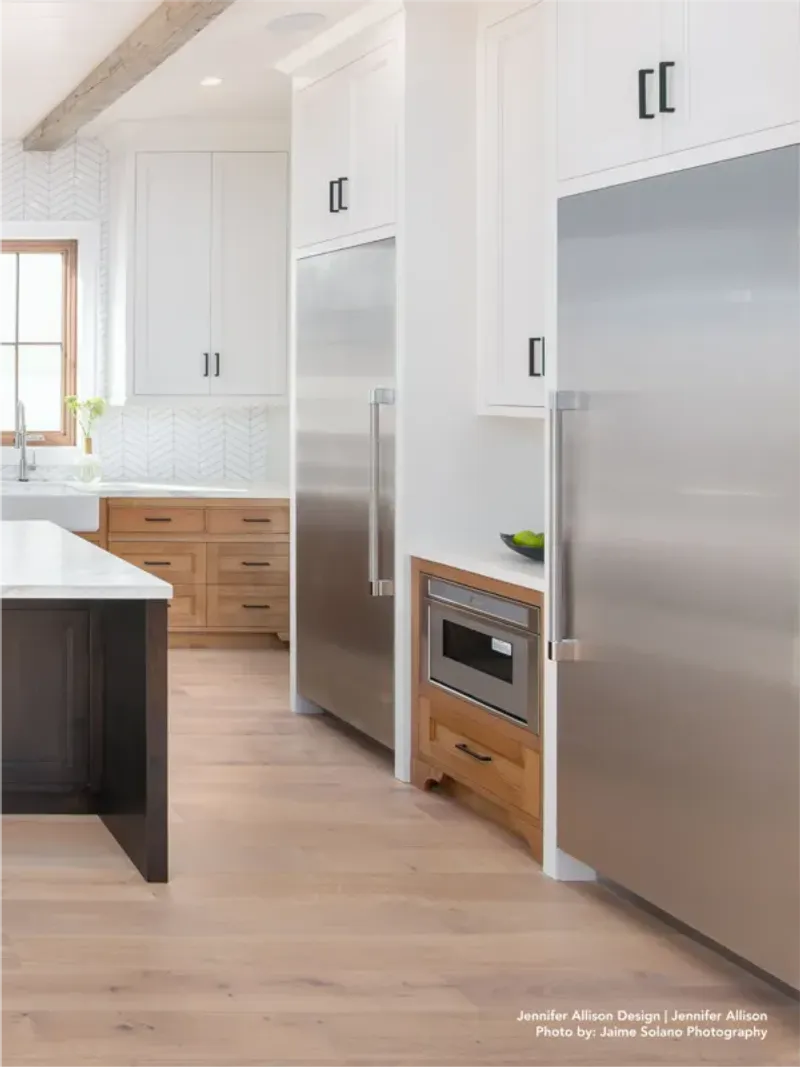
Integrated, unobtrusive appliances have replaced those chunky, attention-grabbing models in today’s finest New Mexico kitchens. Panel-ready refrigerators that blend with cabinetry, induction cooktops that sit nearly flush with counters, and dishwashers hidden behind cabinet panels create a cohesive look where technology doesn’t dominate.
Taos designer Roberto Sanchez appreciates how these quieter appliances support the architecture. “The kitchen should be about the space and materials, not about showing off the latest gadget,” he explains. Many homeowners value how these integrated options create a more peaceful visual experience.
What makes these appliance choices feel current is their focus on performance rather than appearance – high-functioning tools that don’t need to announce themselves through industrial styling or prominent brand badges. They reflect a more confident, mature approach to kitchen design.

